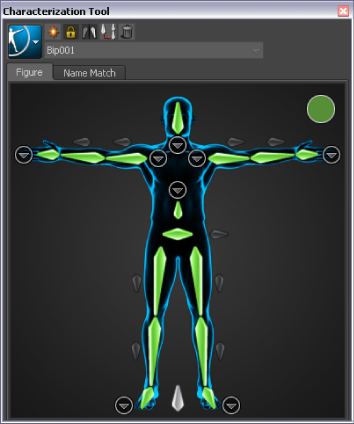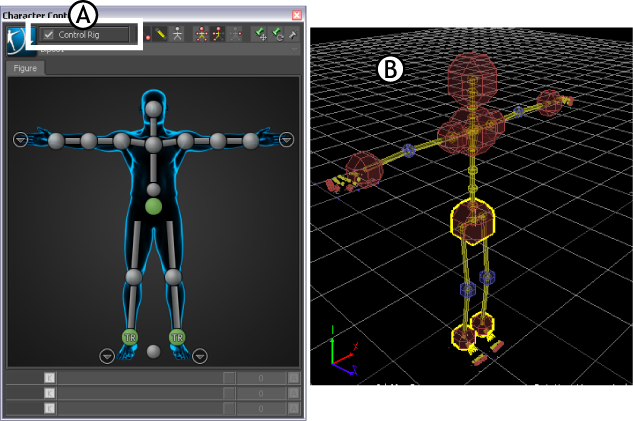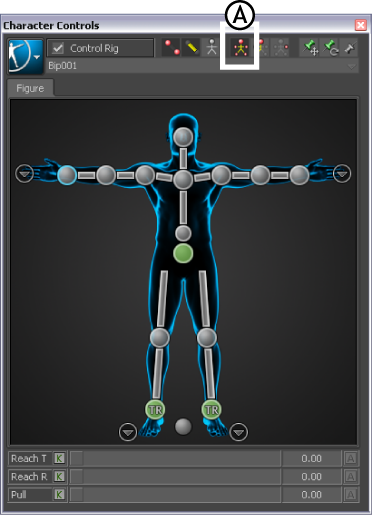In the following procedure, you characterize in MotionBuilder the 3ds Max biped (My_biped.FBX) you saved in the previous procedure (Create and export a 3ds Max biped). Characterization assigns a Control rig to the biped bones and is the name MotionBuilder uses for the process of rigging a biped skeleton.
To characterize your 3ds Max biped:

Rotate the skeleton's shoulders into a T-stance.

Applying the 3ds Max Biped Template asset to the biped skeleton
The 3ds Max Biped template is specially designed for bipeds created in 3ds Max as they have a naming structure that MotionBuilder does not recognize.

The Characterization Tool shows that the characterization is correct.
The Characterization tool shows green if the characterization is correct, yellow if potential problems are detected, and red if there is an element of the skeleton matching that is incorrect.
The next step is to add a Control rig so you can animate it.

Character Controls Source menu A. Control rig

The Ctrl Rig In setting activates the Character Controls Character representation and displays the Control rig effectors on the biped in the Viewer window (B).

A. Ctrl Rig In activated B. Control rig effectors appear on the biped
The Character representation is an image of a human form meant to represent the biped skeleton. It contains all the effectors you need to animate its Control rig. The biped is now rigged and ready to receive animation.

Character controls A.Right Wrist effector selected

Character controls A.Full Body option.

Notice as you move the hand, the arm extends and the rest of the body follows in a natural movement.
You can now transform and animate the characterized 3ds Max biped in MotionBuilder. See Animating a 3ds Max Character in MotionBuilder.